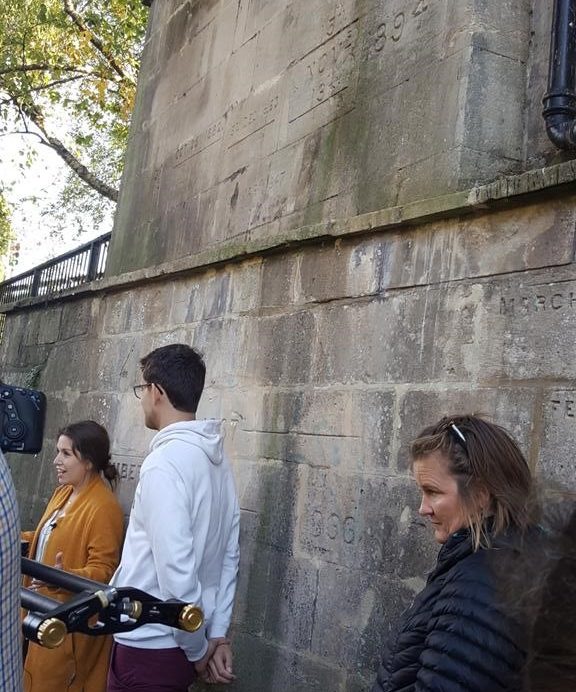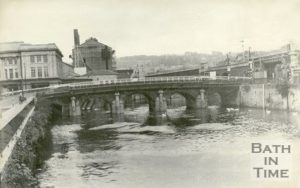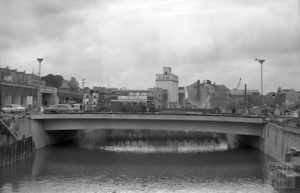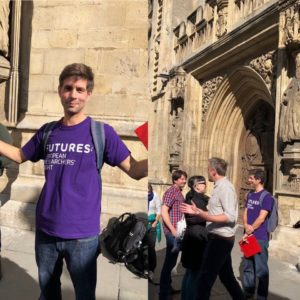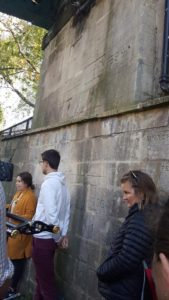On Friday 28 September, WISE student Ioanna Stamataki took part at an event called “Walking with Scientists”. It was part of FUTURES, a series of free events taking place across Bristol and Bath to celebrate European Researchers' Night on Friday 28 September. European Researchers' Night is funded by the EU Commission and aims to engage the European public in celebrating the latest and most stimulating research at a local and an international level. This year, simultaneous events took place in over 300 cities, spanning across 24 European countries.
Two walks were organised and led by Olly Langdon from Kilter Theatre and the walkers were joined by researchers from the University of Bath at different stops along the route to talk about their work, and answer questions. With the Abbey as a starting point and stops at Westgate Buildings, Royal National Hospital for Rheumatic Diseases, the Herschel Museum, Carpenter House, Halfpenny Bridge and Pulteney Weir, researchers from all disciplines presented their research. The talks ranged from modern slavery, to pain management, modern work practices in the legal profession, astronomy, historical floods, uncertainty and flood resilience of building materials.
During the walk, in collaboration with Tom Smith from EPSRC Centre for Doctoral Training in Statistical Applied Mathematics (SAMBa) we gave a short talk about the historical floods of the River Avon in the City of Bath and the applications of using such historical data. The data I presented were supported by research conducted as part of a project funded by the Leverhulme Trust, led by the Research Unit for Water, Environment and Infrastructure Resilience (WEIR) and coupled with a public engagement project, called the River is the Venue, which has commissioned a series of artworks inspired by the flooding events in Bath.
1823 blockage of the five-arch Old Bridge from a block of timber and 1965 replacement by Churchill Bridge
During the walk, we stood underneath the Halfpenny Bridge where I started by pointing out the flood marks and talked briefly about some important floods in Bath such as 1823, 1882, 1894, 1960 and 1968 and the policy changes they triggered. I related this to my own research on flash floods which are very difficult events to observe and record leaving sometimes only flood marks to relate back to the event. Tom in his turn explained why we can't know exactly how big historical floods were, and why this uncertainty must be considered when trying to understand the risks that future floods pose to Bath.
Ioanna said: “It was a very interesting experience and I had such a good time talking part at the European Researcher’s Night. Events like this, are a great opportunity to engage the public with the research we are doing at the University and the interest was obvious from the involvement and participation”. Keep an eye for a full video of the event on the FUTURES website and in the meantime have a look here at a short interview from the day and more videos and photos on the event’s social media:
Twitter: @FUTURES_ERN, #FUTURESNIGHT
Facebook: @FUTURESERN
From left to right: Olly Langdon (walk leader), Ioanna and Tom talking about historical floods underneath Halfpenny Bridge and historical flood marks
Respond

